Digital Poster
Brain Tumors: AI & Machine Learning
ISMRM & ISMRT Annual Meeting & Exhibition • 10-15 May 2025 • Honolulu, Hawai'i

 |
Computer Number: 129
2548. Cortical
and Network Reorganization in Glioma-Related Epilepsy: Insights
from Structural and Machine Learning Analyses
S. Zhang, H. Sun, Q. Yue, Q. Gong
west china hospital of sichuan university, Chengdu, China
Impact: This study reveals significant cortical and
network alterations in GRE patients, highlighting cortical
reorganization's role in GRE pathophysiology and the
potential of machine learning for developing targeted
diagnostic and therapeutic strategies.
|
|
 |
Computer Number: 130
2549. DCE-MRI-based
radiomics model explained by SHAP method for predicting CDKN2A/B
homozygous deletion in IDH-mutant Astrocytomas
H. Yang, Z. Zhu, H. Lin, X. Zhang, B. Zhang
Nanjing Drum Dower Hospital, Nanjing, China
Impact: Our study proved that the DCE-MRI-based
radiomics model has excellent
ability to predict CDKN2A/B homozygous deletion status in
IDH-mutant astrocytomas.
|
|
 |
Computer Number: 131
2550. Deep
learning-based spatial tumor phenotyping for radiogenomic
prediction of the IDH-genotype in preoperative glioma
J. Lohmeier, J. Meinhardt, H. Radbruch, W. Brenner, A.
Tietze, M. Makowski
Charité University Hospital, Berlin, Germany
Impact: We performed DL-based spatial mapping of
treatment-naïve glioma and computed the CTM-ratio for the
evaluation of spatial tumor characteristics, which enabled
robust classification of the IDH-genotype – with
implications for the clinical management of adult-type
glioma.
|
|
 |
Computer Number: 132
2551. Clinical
Value of Radiomics Analysis of a 2cm Pericavitary Edema Habitat
in Predicting Recurrence in Postoperative Glioma Patients
M. Cheng, Z. Wang
Aerospace Center Hospital, Beijing, China
Impact: This study introduces a novel method to
visualize and quantify tumor heterogeneity in the
pericavitary edema zone, improving prognosis prediction for
postoperative glioma patients and aiding clinicians in
precisely delineating radiotherapy target volumes.
|
|
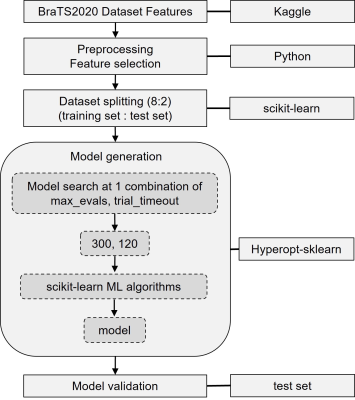 |
Computer Number: 133
2552. Prediction
of Glioma Patient Survival Using MRI-Derived Features and
Automated Machine Learning (AutoML) Methods
M. Singh, D. Dwivedi, B. V. R. Kumar, S. Pathak, R. Jha, S.
Singh, A. Parihar, C. Srivastava, B. Ojha
King George's Medical University, Lucknow, India
Impact: Our results show that AutoML methods like
Hyperopt-sklearn can simplify and accelerate survival
prediction for glioma patients, even for researchers with
minimal programming skills, thereby broadening access to
advanced data-driven tools in clinical research.
|
|
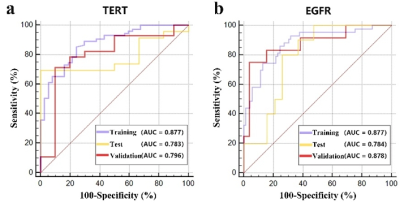 |
Computer Number: 134
2553. Functional
MR habitat imaging feature for preoperative prediction of TERT
promoter and EGFR gene phenotype in IDH-wildtype glioblastoma
Y. Su, D. Cao, D. She, Y. Song, G. Yang
The First Affiliated Hospital of Fujian Medical University, Fuzhou, China
Impact: The habitat imaging model based on functional MR
were helpful for accurately predicting TERT and EGFR
molecular status of tumors.
|
|
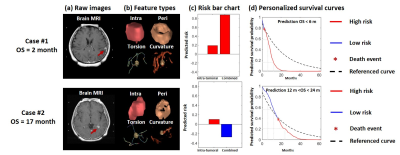 |
Computer Number: 135
2554. Enhancing
Prognostic Prediction for Patients with Brain Metastasis from
Lung Cancer after Radiosurgery Based on Tumor and Vasculature
Radiomics
J-R Chen, C-C Lee, H-C Yang, H-M Wu, C-F Lu
National Yang Ming Chiao Tung University, Taipei, Taiwan
Impact: We identified the benefit of combining tumor and
vasculature features in prognostic prediction for lung
cancer patients with BM after radiosurgery. This study also
reflected the association between TAV and prognosis for the
patient with overall survival over 24 months.
|
|
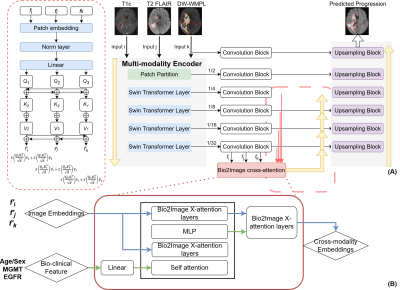 |
Computer Number: 136
2555. Integrating
Bio-Clinical Features with White Matter Infiltration for
Personalized RT Planning in Glioblastoma with Transformer Model
B. Liu, N. Tran, A. Jakary, T. Ngan, S. Braunstein, K.
Sheng, H. Lin, J. Lupo
University of California, San Francisco, San Francisco, United States
Impact: The cross-modality approach uniquely combines
bio-clinical and imaging data, capturing complex paths of
tumor spread for tailored RT planning. This fusion improves
prediction accuracy, minimizes healthy tissue exposure, and
enhances personalized care, promising improved outcomes and
extended patient survival.
|
|
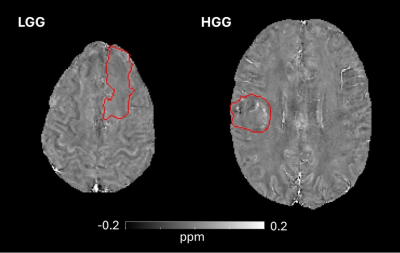 |
Computer Number: 137
2556. Quantitative
Susceptibility Mapping for non-invasive glioma grading: a pilot
study
G. Debiasi, B. Statton, S. Kukran, S. Cardona, K. Wourms, L.
Honeyfield, L. Pakzad-Shahabi, L. Dixon, M. Williams, R.
Quest, M. Castellaro, A. Bertoldo, M. Grech-Sollars
University of Padova, Padova, Italy
Impact: Radiomic features derived from susceptibility
maps of radiologically graded glioma can distinguish between
high- and low-grades. This may serve as a non-invasive tool
to support clinical decisions when invasive procedures are
not an option or watch-and-wait strategies are preferred
instead.
|
|
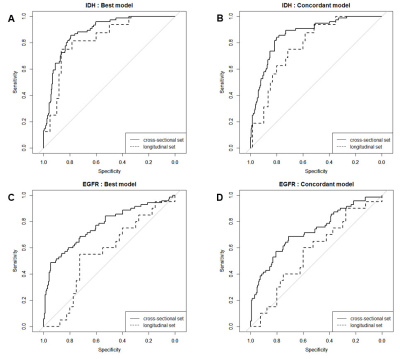 |
Computer Number: 138
2557. Imaging
prediction of molecular subtypes in adult-type diffuse glioma
considering spatial and temporal heterogeneity
Y. H. Roh, E-N Cheong, J. E. Park, Y. Choi, S. C. Jung, S.
W. Song, Y-H Kim, C-K Hong, J. H. Kim, H. S. Kim
Samsung medical center, Seoul, Korea, Republic of
Impact:
This study enables reliable, non-invasive prediction of IDH mutation in gliomas using multiparametric MRI, informing personalized treatment. Caution is advised for EGFR prediction due to its spatial and temporal variability. |
|
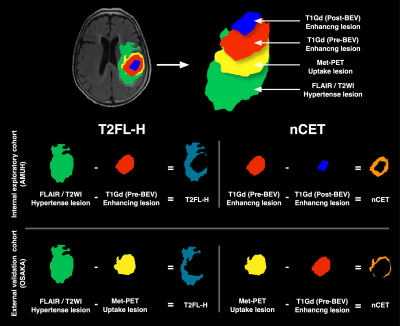 |
Computer Number: 139
2558. Radiomics
analysis of non-enhancing lesions after Bevacizumab
administration in recurrent glioblastoma
T. Sanada, M. Kinoshita, T. Shimizu, Y. Okita, H. Arita, H.
Sato, M. Saito, N. Mitsui, S. Hiroshima, M. Tanino, Y.
Kanemura, H. Kishima
Asahikwa Medical University, Asahikawa, Japan
Impact: Radiomic features of lesion where CET
transformed into nCET after BEV administration may provide
valuable information in predicting nCET in GBM.
|
|
 |
Computer Number: 140
2559. MRI
habitat-derived radiomics Identifies novel glioblastoma subtypes
with distinct tertiary lymphoid structure-associated gene
profiles
J. Zhang, X. Ma, X. Yu, Y. Zhong, X. Lou
The First Medical Center of Chinese PLA General Hospital, Beijing, China
Impact:
We developed and validated a classifier based on habitat-derived radiomics features to identify novel GBM subtypes with distinct TLS-associated gene profiles. This may provide a new in vivo approach for precise evaluation of neoadjuvant immunotherapy response in GBM noninvasively. |
|
 |
Computer Number: 141
2560. Deep
Learning-Based Prediction of Gadolinium-Enhanced MRI from
Non-Contrast MRI and MR Fingerprinting
E. Alzaga Goñi, W. Zhao, S. Gongala, R. Adams, S. Moinian,
S. Deng, P. Arjmand, Y. Chen, C. Badve, D. Ma
Case Western Reserve University, Cleveland, United States
Impact: The clinical use of a deep learning model to
obtain gadolinium-enhanced MR images would replace the need
for GBCAs, thus eliminating associated problems including
longer scan times, higher costs, and certain patient risks.
|
|
 |
Computer Number: 142
2561. Defining
Radiation Target Volumes with AI-Driven Predictions of Glioma
Recurrence from MRSI, Diffusion MRI, and Transformers
H. Kukreja, N. Tran, B. Liu, J. Ellison, T. Ngan, A. Jakary,
O. Adegbite, T. Luks, Y. Li, A. Molinaro, J.
Villanueva-Meyer, S. Braunstein, H. Lin, J. Lupo
University of California San Francisco, San Francisco, United States
Impact: Our results highlight the potential value of
deep learning in future RT treatment planning with
presurgery MRI scans. Vision transformers perform at par (if
not better) with CNNs suggesting opportunities for future
work into their use in progression prediction.
|
|
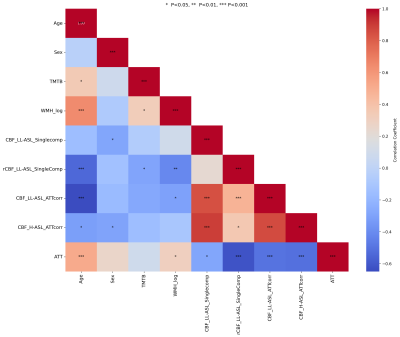 |
Computer Number: 143
2562. Comparison
of long-label single-delay ASL and multi-delay ASL in healthy
aging
B. Shakibajahromi, J. Zhu, S. Li, M. Taso, J. Detre, S.
Dolui
University of Pennsylvania, Philadelphia, United States
Impact: Multi-PLD ASL enhances the assessment of age
effects on brain perfusion.
|
The International Society for Magnetic Resonance in Medicine is accredited by the Accreditation Council for Continuing Medical Education to provide continuing medical education for physicians.